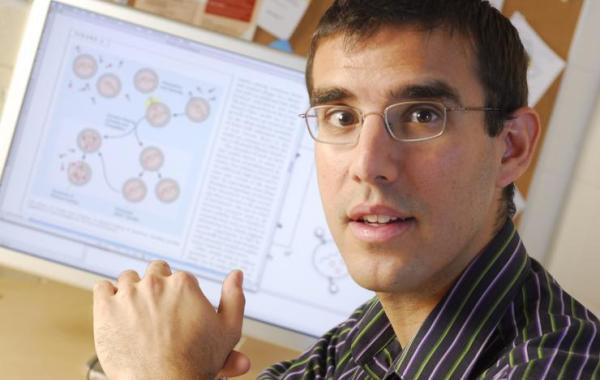Researchers Show How New Viruses Evolve, and in Some Cases, Become Deadly

Joshua Weitz
Inthe current issue of the journal Science,researchers at Michigan State University, the Georgia Institute of Technologyand the University of Texas at Austin demonstrate how a new virus evolves,which sheds light on how easy it can be for diseases to gain dangerousmutations.
Thescientists showed for the first time how the virus called “Lambda” evolved tofind a new way to attack host cells, an innovation that took four mutations toaccomplish. This virus infects bacteria, in particular the common E. coli bacterium. Lambda isn’tdangerous to humans, but this research demonstrated how viruses evolve complexand potentially deadly new traits, said Justin Meyer, MSU graduate student, whoco-authored the paper with Richard Lenski, MSU Hannah Distinguished Professorof Microbiology and Molecular Genetics.
“Wewere surprised at first to see Lambda evolve this new function, this ability toattack and enter the cell through a new receptor – and it happened so fast,”Meyer said. “But when we re-ran the evolution experiment, we saw the same thinghappen over and over.”
Thispaper comes on the heels of news that scientists in the U.S. and theNetherlands produced a deadly version of bird flu. Even though bird flu is amere five mutations away from becoming transmissible between humans, it’shighly unlikely the virus could naturally obtain all of the beneficialmutations all at once. However, it might evolve sequentially, gaining benefitsone-by-one, if conditions are favorable at each step, he added.
Throughresearch conducted at BEACON, MSU’s National Science Foundation Center for theStudy of Evolution in Action, Meyer and his colleagues’ ability to duplicatethe results implied that adaptation by natural selection, or survival of thefittest, had an important role in the virus’ evolution.
Whenthe genomes of the adaptable virus were sequenced, they always had fourmutations in common.
“Theparallelism shown in the evolutionary history of adaptable viruses was strikingand was far beyond what is expected by chance,” noted paper co-author Joshua Weitz, anassistant professor in the School ofBiology at Georgia Tech.
Incontrast, the viruses that didn’t evolve the new way of entering cells had someof the four mutations but never all four together, said Meyer, who holds theBarnett Rosenberg Fellowship in MSU’s College of Natural Science.
“Inother words, natural selection promoted the virus’ evolution because themutations helped them use both their old and new attacks,” Meyer said. “Thefinding raises questions of whether the five bird flu mutations may also havemultiple functions, and could they evolve naturally?”
Additionalauthors of the paper include Devin Dobias, former MSU undergraduate (now agraduate student at Washington University in St. Louis); Ryan Quick, MSUundergraduate; and Jeff Barrick, a former Lenski lab researcher now on thefaculty at the University of Texas at Austin.
Fundingfor the research was provided in part by the National Science Foundation,Defense Advanced Research Projects Agency, James S. McDonnell Foundation andBurroughs Wellcome Fund.
This research was supported in part bythe Defense Advanced Research Projects Agency (DARPA) (Award No.HR0011-09-1-0055) and the National Science Foundation (NSF). The content issolely the responsibility of the principal investigator and does notnecessarily represent the official views of DARPA or NSF.
Research News & Publications Office
Georgia Institute of Technology
75 Fifth Street, N.W., Suite 314
Atlanta, Georgia 30308 USA
Media RelationsContacts: Georgia Tech -- Abby Robinson (abby@innovate.gatech.edu; 404-385-3364) or JohnToon (jtoon@gatech.edu; 404-894-6986); Michigan State University -- Layne Cameron (layne.cameron@ur.msu.edu; 517-353-8819)
Writer: Layne Cameron

Joshua Weitz
